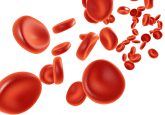A new hope for early diagnosis of malaria?
Researchers from Australia have developed a new test that can detect the malaria parasite in the bloodstream at early stages of the disease.
A recent collaboration between researchers at Monash University (Melbourne, Australia) and the University of Melbourne (Australia) has given new hope for the development of a low-cost and rapid test to detect malaria in the early stages of development.
The test uses Attenuated Total Reflection-Fourier Transform Infrared Spectroscopy (ATR-FTIR), making use of infrared light to detect fatty acids in the plasmodium parasite.
Using previous knowledge on the fatty acid composition of the parasite at different stages of development, the team applied these insights to develop a low-cost and rapid test. The researchers used filtered blood samples and spiked red blood cells with parasites of different numbers and life stages. They successfully detected early ring stage parasites in a suspension of normal erythrocytes.
“Current tests for malaria suffer from serious limitations. Many are expensive, require specialist instruments and highly trained staff to judge whether blood samples contain the parasite. These are big hurdles given that the disease is rampant in developing nations,” commented Bayden Wood (Monash University), senior author of the study.
“What has been holding us back is the lack of an accurate and inexpensive test to detect malaria early and stop it in its tracks. We believe we’ve found it,” Wood explained.
Malaria is contracted through the bite of an infected mosquito, and affects approximately 300 million people worldwide. If left untreated it can lead to coma and death. Early diagnosis is crucial in malaria treatment in order to prevent the parasite from spreading in the body. The same method could potentially be used to detect a number of other blood-borne diseases.
Next, the team plan to carry out clinical tests in a human trial in Thailand. They expect that the test could be on the market within 3 years and has the potential to be portable.
Source: Khoshmanesh A, Dixon MW, Kenny S, Tilley L, McNaughton D, Wood BR. Detection and quantification of early-stage malaria parasites in laboratory infected erythrocytes by attenuated total reflectance infrared spectroscopy and multivariate analysis. Anal. Chem. doi:10.1021/ac500199x (2014) (Epub ahead of print).




